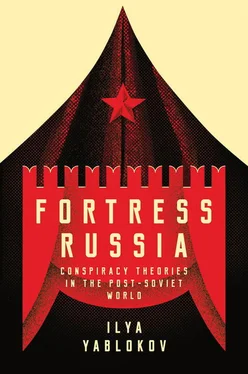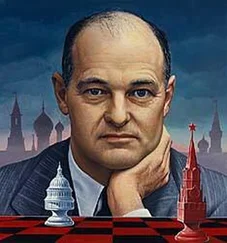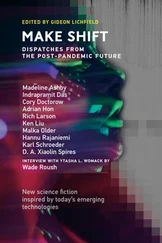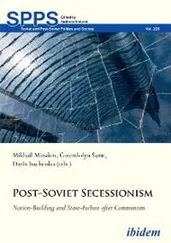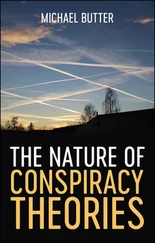Vesti nedeli, the television news programme that was often in the forefront of triggering political campaigns during Putin’s third term as President, broadcast a report on 8 July 2012 on the parliamentary debates about the new law. It included interviews with Krasheninnikova and with Aleksandr Sidiakin, a Duma deputy who was an active supporter of the new law. It echoed the main tropes of the narrative which had turned NGOs into a subversive ‘Other’. Hence Sidiakin contended that in the past few years, approximately seven billion dollars had been transferred from abroad to certain Russian NGOs, and that the biggest transfers had been made during the electoral period. This statement, presented without any evidence, clearly reflected the Kremlin’s main concerns: the possibility of foreign influence on the outcome of Russian elections, and the desire to further isolate the country. It also revealed the real aim of the new law: to ensure a safe transfer of power in future elections by restricting the activities of independent observers.
In his interview, Sidiakin stoked popular fears of foreign subversion which had been spread by pro-Kremlin spokesmen during the presidential elections in 2012. He claimed that the law would only apply to the minority of NGOs which were closely related to foreign organizations. The programme then included a statement by Liudmila Alekseeva, who said she had expressed her concern about the new law to the US President. According to the reporter, this clearly demonstrated where the loyalty of such activists lay (Zarubin, 2012). The report showed how this widely-watched state-aligned television channel could provide coverage of the law from the regime’s point of view, which relied heavily on conspiratorial ideas which were further developed specifically for this campaign.
In addition to taking ideas from past Soviet propaganda, active supporters of the new law used different conspiratorial theories from the post-Soviet period. For example, while he was presenting the new law to the Duma, Sidiakin wore the St George ribbon; this provided a visual contrast between his initiative and the aims of the anti-regime protesters, who wore white ribbons as their symbol in 2011–12. The St George ribbon was a symbol of soldiers’ bravery in Imperial Russia, and after the Second World War was reintroduced as a military award. It was revived by pro-Kremlin journalists in 2005 partly in response to the orange ribbons which were a symbol of the ‘Orange Revolution’ in Ukraine (Zygar’, 2006). According to Miller (2012c, pp. 94–7), the St George ribbon became one of Russia’s most successfully constructed symbols of historical memory, commemorating the patriotism and heroic deeds of Soviet soldiers during the Second World War. Sidiakin’s use of this symbol was aimed at stressing the patriotic nature of the new law, which would defend the sovereignty of the nation. This stood in contrast to the unpatriotic actions of the opposition. The performative character of Sidiakin’s speech was clear when he trampled the white ribbon under foot, symbolizing the country’s resistance, by means of the new legislation, to foreign subversion (Piter.tv, 2012). These two symbols, the George ribbon and the white ribbon, were juxtaposed in a conspiratorial way. The intention was to emphasize the otherness of NGOs, and at the same time, to advocate the social cohesion of the rest of the nation, which was emphasized by evoking the memory of the Second World War.
The campaign against NGOs also made use of conspiracy theories regarding the collapse of the Soviet Union. In July 2012, a prominent Russian radio station with liberal credentials, Ekho Moskvy ( Echo of Moscow ), broadcast a talk show about the law on NGOs. Discussing the reasons for its implementation, Krasheninnikova accused Russian NGOs of planning to undermine state sovereignty and argued that they were participating in a long-term campaign orchestrated by the United States with the aim of destroying Russia and promoting anti-Russian ideas among Russia’s citizens. ‘Yes, we destroyed [the USSR] ourselves. This is Washington’s idea, [and] look how deeply [this idea] is embedded in your minds’, argued Krasheninnikova (Dziadko, Shevardnadze and Krasheninnikova, 2012) .The Soviet collapse is being used here as a justification for the change in legislation. This marks the extent to which, by 2012, the idea it had been brought about by the efforts of foreign intelligence had become an essential feature of the country’s political discourse.
The label which was to be imposed on some Russian NGOs after the adoption of the new law was so controversial that none of the organizations agreed to be included in the list of ‘foreign agents’. As a result, in March 2013, Russian law enforcement initiated a mass inspection of NGOs throughout the country, checking 233 NGOs in 52 regions (Zheleznova, 2013).
Among the first to be targeted were Transparency International and Amnesty International, major human rights organizations which had often been critical of the domestic policies of the Kremlin. Another target was an independent sociological foundation, the Levada-Centre , which was the only independent opinion polling company in the country at that time. The inspection of the Levada-Centre demonstrates with particular clarity the vagueness of the terms of the new law and its close connection to conspiratorial discourse. The pretext for inspection was the centre’s alleged political activities, which were forbidden for NGOs with foreign funding. In the absence of any definition of political activities, the Levada-Centre was accused of influencing the political situation within Russia by publishing the results of opinion surveys which, in the government’s view, were subversive (Balmforth, 2013).
A public debate about the inspection erupted, with pro-Kremlin participants using conspiracy-based arguments to defend the actions of the law-enforcement organs. For instance, Evgenii Fedorov, a Duma deputy, contended that the Levada-Centre was part of the ‘framework’ of 664 NGOs which were created to establish external control and exploitation of Russia by the West (Turkova, 2013). This conspiratorial notion was put forward to delegitimize the results of the centre’s polls, which demonstrated public disappointment with some of Putin’s politics after 2012. The ideas articulated by Fedorov, which were largely based on anti-Western conspiracy theories, could potentially be applied to various concerns in domestic policy; this meant that they could be used as a significant instrument of social cohesion in the post-electoral period.
The role of conspiratorial narratives increased still further in the media campaign against NGOs in 2013, which signified a change in governmental policies after Putin’s re-election in 2012. Mamontov’s documentary of 2006 had featured one of a relatively small number of conspiratorial stories broadcast by the federal television channel when the campaign against NGOs first started, but the frequency and diversity of such programmes and public speakers during Putin’s third presidential term increased exponentially.
The talk show Politika , broadcast by the state-aligned television Channel One in May 2013, demonstrated that despite the participation of discussants with different points of view, the programme gave particular prominence to conspiracy theories by means of editing, giving more voice to loyal intellectuals, and allowing moderators to manipulate the debate. Attempts on the part of speakers opposed to the Kremlin to demonstrate the mistakes made in recent inspections were interrupted by the moderators, who immediately posed another question to the loyal public intellectuals. This moved the discussion in a different direction and enabled the use of conspiratorial rhetoric. For instance, the issue of civic activism, in which some NGOs were involved, was diverted into a discussion about the colour revolutions and the supposed role of the intelligence services in them (see, for example, Viacheslav Nikonov and Mikhail Remizov’s remarks: Politika, 2013). These manipulative practices created the impression of a plurality of opinions; but the domination of conspiratorial ideas and the biased approach of the moderators determined the overall contours of the narrative and served to delegitimize political opponents of the Kremlin.
Читать дальше
Конец ознакомительного отрывка
Купить книгу
